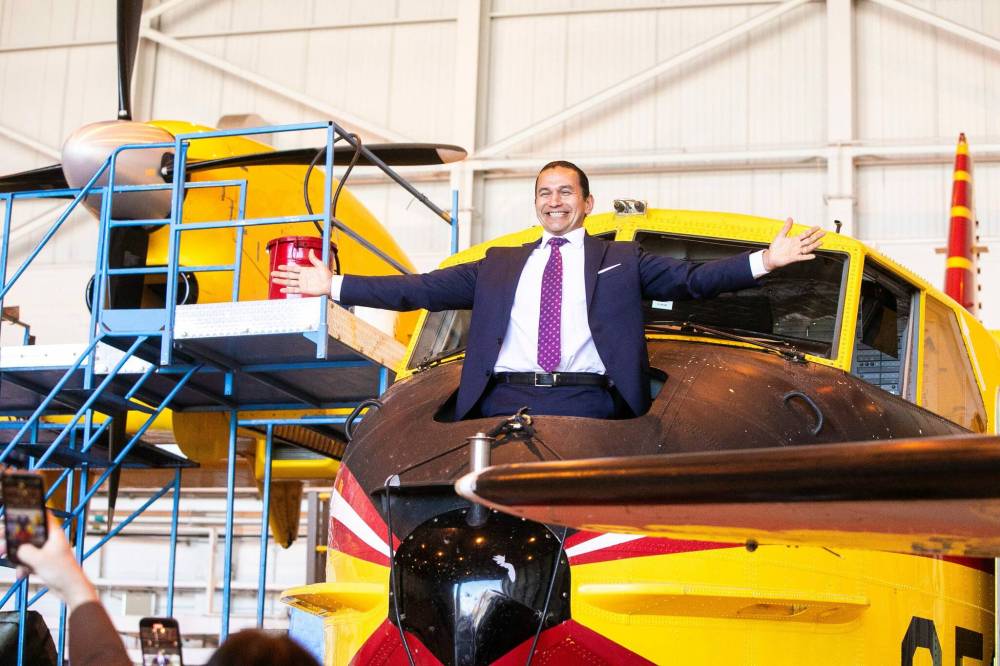Province puts $80M down on 3 water bombers
Advertisement
Read this article for free:
or
Already have an account? Log in here »
We need your support!
Local journalism needs your support!
As we navigate through unprecedented times, our journalists are working harder than ever to bring you the latest local updates to keep you safe and informed.
Now, more than ever, we need your support.
Starting at $15.99 plus taxes every four weeks you can access your Brandon Sun online and full access to all content as it appears on our website.
Subscribe Nowor call circulation directly at (204) 727-0527.
Your pledge helps to ensure we provide the news that matters most to your community!
To continue reading, please subscribe:
Add Brandon Sun access to your Winnipeg Free Press subscription for only
$1 for the first 4 weeks*
*$1 will be added to your next bill. After your 4 weeks access is complete your rate will increase by $4.99 a X percent off the regular rate.
Read unlimited articles for free today:
or
Already have an account? Log in here »
WINNIPEG — Increased precipitation in northern Manitoba is giving provincial officials hope the upcoming wildfire season will be more manageable than last year.
“It’s very difficult to predict now, but I can tell you compared to last year, northern Manitoba and western Manitoba is a lot better because the snow pack is a lot higher,” said Earl Simmons, the province’s wildfire service director. “It’ll help rejuvenate the water levels in the lakes and the rivers.”
Manitoba’s wildfire service will be flying over lakes and rivers this weekend to check ice conditions and look for open water to use should any wildfires break out.

Premier Wab Kinew hams it up for the cameras inside the Babcock Canada hangar in Winnipeg after announcing funding to upgrade the provincial water bomber aircraft fleet on Friday. (Mikaela MacKenzie/Winnipeg Free Press)
To date in 2025, the province has recorded 19 wildfires that have burned 1,852 hectares.
Eleven fires are actively burning. All are located in central Manitoba, the province’s fire map shows.
The forecast comes on the heels of the Manitoba government putting an $80-million down payment on three new water bombers that will replace three aging aircraft in the province’s seven-plane fleet.
That money for the new water bombers was earmarked in last month’s provincial budget.
The planes will be De Havilland Canadair 515s, made by Babcock Canada, and will replace the fleet’s CL 215 water bombers that are nearing the end of life with engines that were developed in the Second World War.
Premier Wab Kinew said the final cost of the aircraft is still under negotiation.
Simmons said he has faith in the province’s current fleet despite its age.
“We’re confident with the maintenance by Babcock Canada … and the premier and the rest of the cabinet proactively boarding the water bombers so that we’re ready when it’s time to retire those water bombers,” he said during a Friday news conference.
The first plane is expected to join the province’s fleet for the 2031 fire season, while the other two are expected to be added in 2032.
The new aircraft have updated navigation systems, increased tank capacity and more fuel-efficient engines.
The old planes could be sold back to Babcock or developing countries for their own fire-suppression operations, Simmons said.
Meanwhile, the Manitoba Government and General Employees’ Union called on the province to return aerial wildfire suppression to the public service.
The previous PC government contracted wildfire suppression to Babcock in 2018 under a 10-year, $187-million contract in an effort to save money.
MGEU president Kyle Ross urged the NDP to bring the service back in-house.
“These are public assets and public jobs that should serve the public interest,” Ross said in a news release. “Bringing aerial fire suppression back into government hands will not only improve service quality, but it will also create good jobs and better value for Manitobans.”`
The province is also spending $6.7 million on new and more responsive firefighting equipment and systems, as well as $1.1 million over four years for a new weather information system, wildfire mapping and reporting systems.
» Winnipeg Free Press
